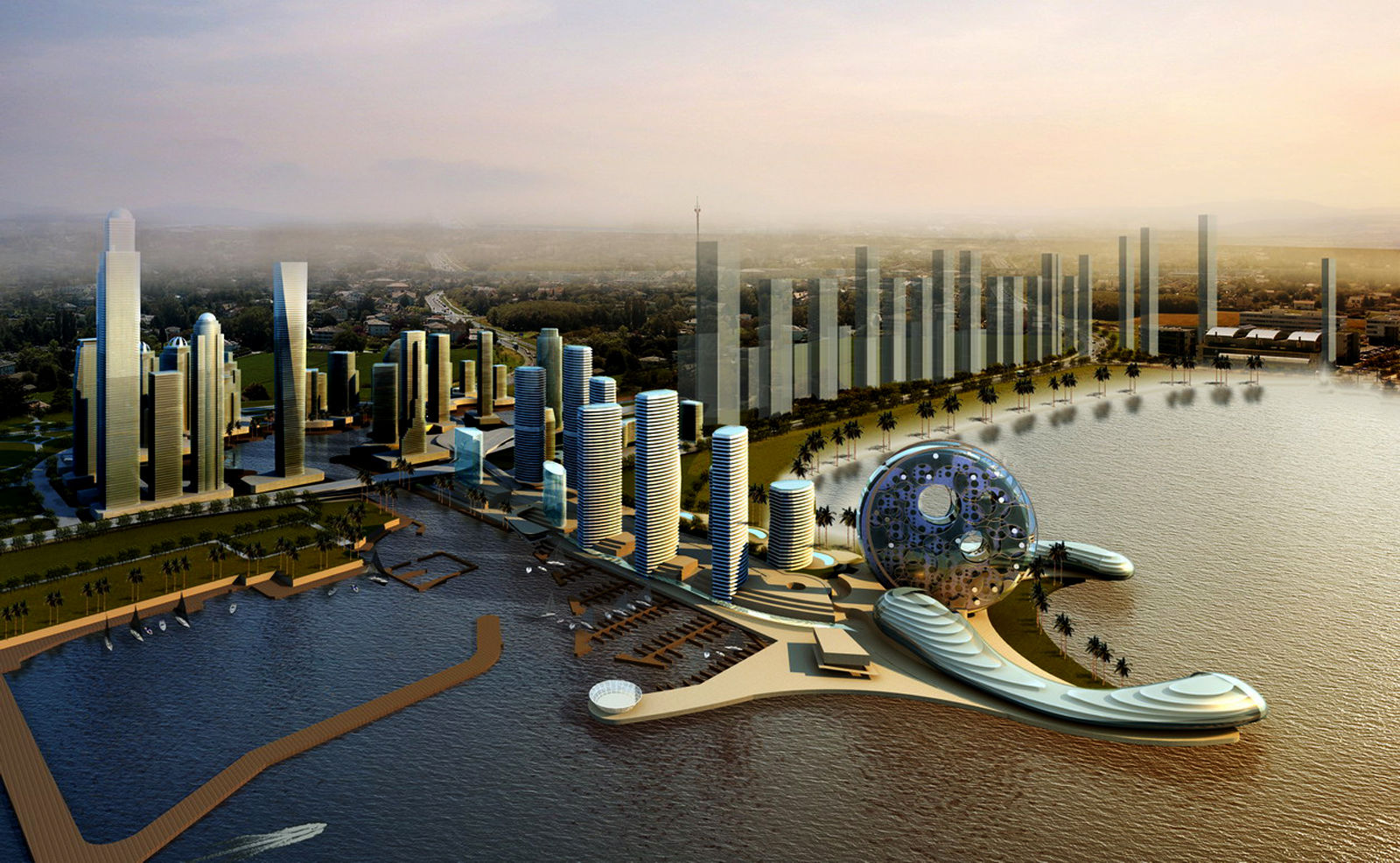
Futuristic Buildings
FB | Today's Technology is Solving Yesterday's Problems

Solar Photovoltaic (PV)
Disadvantages:
-
As in all renewable energy sources, solar energy has intermittency issues; not shining at night but also during daytime there may be cloudy or rainy weather, thus making solar energy panels less reliable a solution.
-
Solar energy panels require additional equipment (solar inverters) to convert direct electricity (DC) to alternating electricity (AC) in order to be used on the power network.
-
For a continuous supply of electric power, especially for on-grid connections, Photovoltaic panels require not only Inverters but also storage batteries; thus increasing the investment cost for PV panels considerably
-
In case of land-mounted PV panel installations, they require relatively large areas for deployment; usually the land space is committed for this purpose for a period of 15-20 years – or even longer.
-
Solar panels efficiency levels are relatively low (between 14%-25%) compared to the efficiency levels of other renewable energy systems.
-
Though PV panels have no considerable maintenance or operating costs, they are fragile and can be damaged relatively easily; additional insurance costs are therefore of ultimate importance to safeguard a PV investment.
Prospects of Solar Panals
Solar Panels cost is currently on a fast reducing track and is expected to continue reducing for the next years – consequently solar PV panels has indeed a highly promising future both for economical viability and environmental sustainability.
What is Solar Photovoltaic?
Solar panel electricity systems, also known as solar photovoltaics (PV), capture the sun's energy using photovoltaic cells. These cells don't need direct sunlight to work – they can still generate some electricity on a cloudy day. The cells convert the sunlight into electricity, which can be used to run household appliances and lighting. The stronger the sunshine, the more electricity is produced. Solar PV technology is improving at an impressive rate, allowing it to become more efficient and effective at generating electricity.
How does it work?
Two separate layers of semiconductor material, one positive and one negative, make up PV cells. Photons are absorbed from semiconductor atoms when light enters the PV cell, which in effect frees the electrons from the cells negative layer and allows it to feed back through the positive layer, which then produces electric currents.
A solar photovoltaic system draw power like any other electric generated system, but the equipment used to get the desired effect is different. A sophisticated body of electrical codes and standards guide the operation of the PV systems, allowing for proper control, distribution, and storing of energy once the system generates its power from sunlight. See a pop-up animation of how solar electricity panels can work in your home.
Advantages:
-
PV panels provide clean – green energy. During electricity generation with PV panels there is no harmful greenhouse gas emissions thus solar PV is environmentally friendly.
-
Solar energy is energy supplied by nature – it is thus free, readily available and abundant!
-
Solar energy is especially appropriate for smart energy networks with distributed power generation – DPG is indeed the next generation power network structure!
-
Photovoltaic panels, through photoelectric phenomenon, produce electricity in a direct electricity generation way
-
Operating and maintenance costs for PV panels are considered to be low, almost negligible, compared to costs of other renewable energy systems
-
PV panels are totally silent, producing no noise at all; consequently, they are a perfect solution for urban areas and for residential applications (see solar panels for homes)
-
Because solar energy coincides with energy needs for cooling PV panels can provide an effective solution to energy demand peaks – especially in hot summer months where energy demand is high.
-
Residential solar panels are easy to install on rooftops or on the ground without any interference to residential lifestyle.
 |
|---|